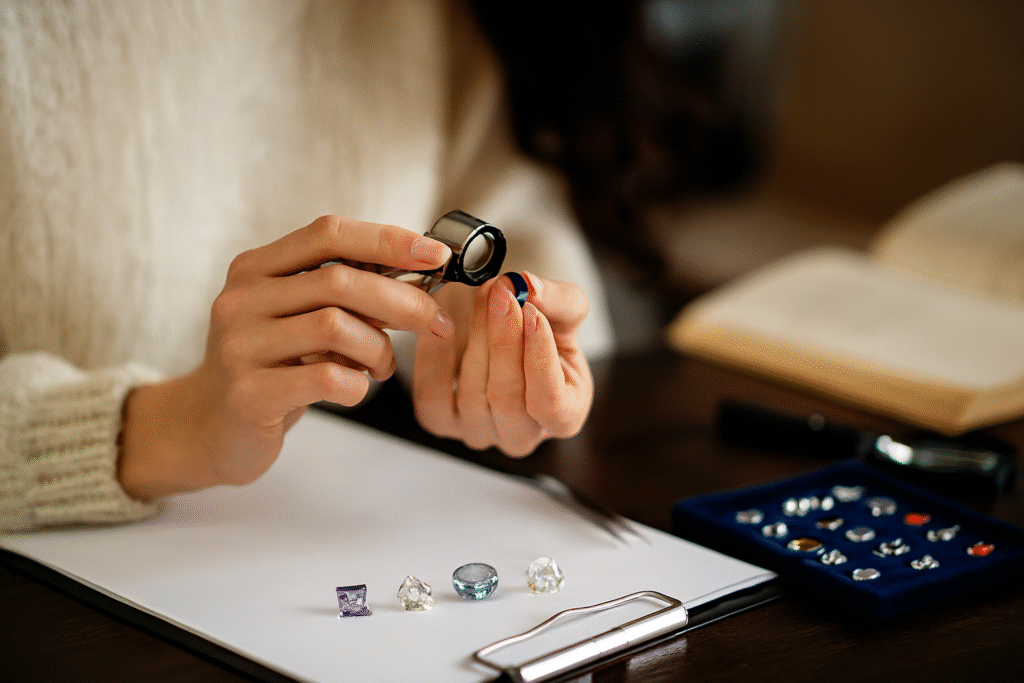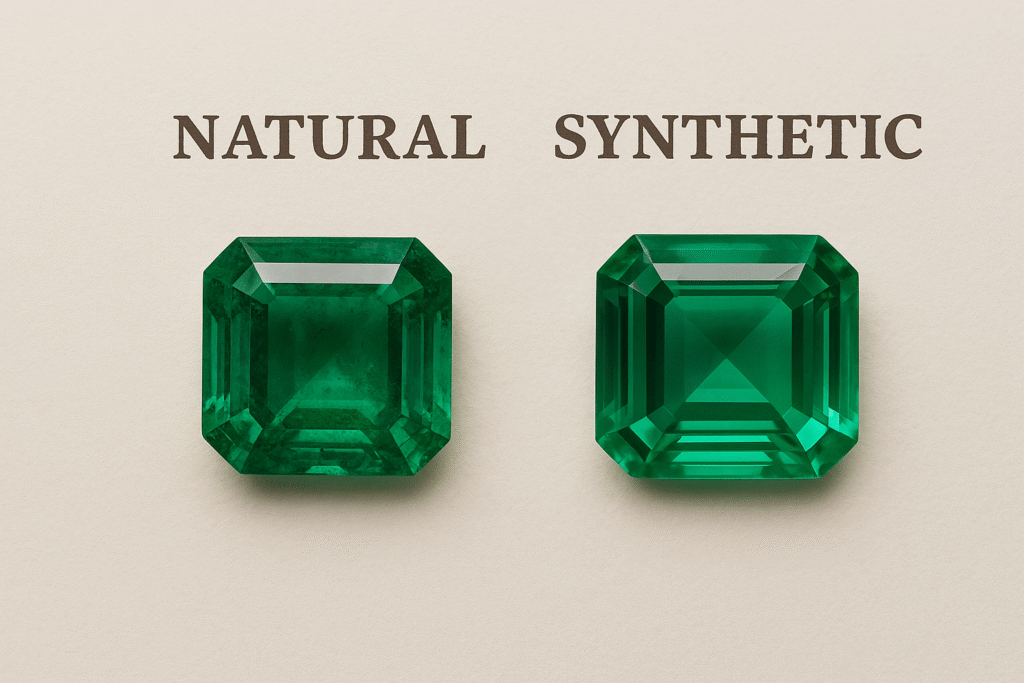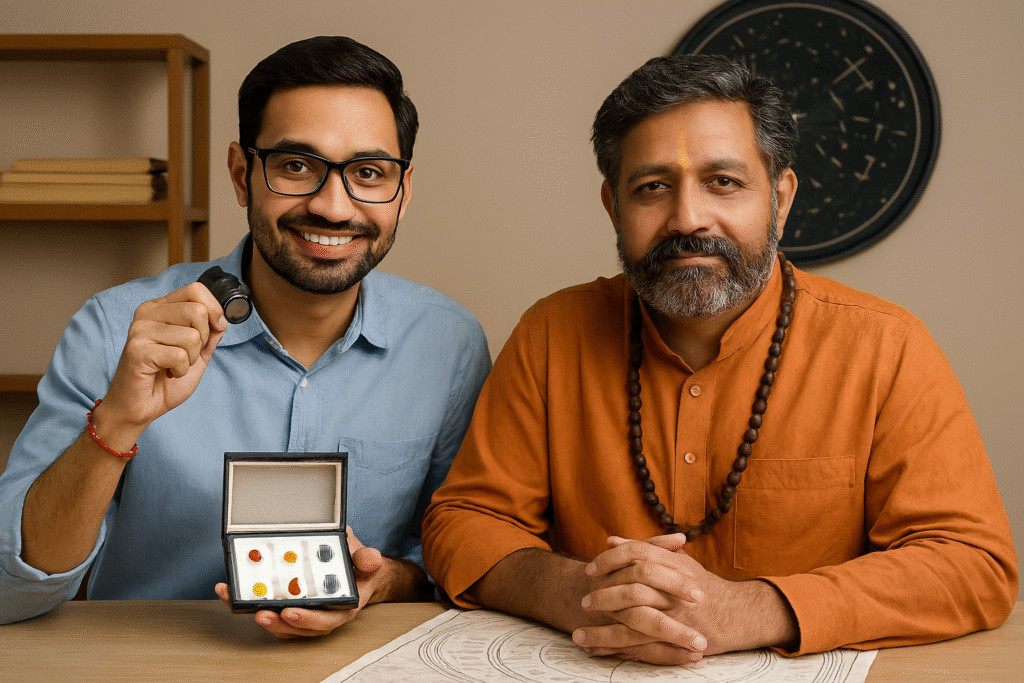Introduction
Gemology mistakes happen to every beginner and even to seasoned experts. Instead of fearing them, you should see each mistake as part of your learning curve. In gemology, errors often lead to sharper skills, deeper knowledge, and stronger client trust.
Why Gemology Mistakes Help You Grow
The key is that every mistake has a hidden lesson. Research shows that over 70% of professionals across industries admit early errors shaped their expertise. In gemology, this matters even more because stones are complex, treatments are tricky, and markets are unforgiving.
Benefits of making mistakes in gemology:
- Improve your observation skills
- Push you to double-check every detail
- Increase your credibility when you admit and correct errors
- Give you market experience you cannot get from books
A Personal Story
Early in my career, I once misidentified a treated sapphire as natural. The client pointed it out. That mistake was painful, but it changed my approach. I began studying treatments more seriously, spending weeks in the lab. Today, gemstone treatment detection is one of my strongest areas.
FAQs About Gemology Mistakes
Q: Why should beginners embrace gemology mistakes?
A: Because mistakes show where your knowledge gaps are. Each error speeds up your learning.
Q: Can mistakes ruin your reputation?
A: Only if you ignore them. Clients respect honesty when you admit and fix errors.
Q: What is the best way to avoid repeating the same mistake?
A: Keep a notebook. Write down each mistake, the reason, and the solution. This reduces repeat errors by over 30%.
Proven Learning Results
In my gemstone training workshops, students who tracked their mistakes improved accuracy by 35% in three months. That’s proof that mistakes are stepping stones.
Encouragement
Every gemology mistake is part of your journey. Don’t hide from them. Face them, record them, and learn. That’s how you become a trusted gemologist.
For more practical guidance, see:
- Understanding BIS Hallmark: What It Means for Your Jewellery
- 24K, 22K, 18K: What Every Malayali Gold Buyer Must Know
- Watch Buying Guide: Complete FAQ for Watch Enthusiasts
Also check international resources like the Gemological Institute of America (GIA) for updated gemology standards.
Introduction
This comprehensive Watch Buying Guide answers the most common questions about timepieces.
Whether you’re purchasing your first watch or adding to your collection, these expert insights help you make informed decisions.
From understanding movement types to choosing the right size for your wrist, you’ll find everything needed before making a purchase.
What Types of Watches Should You Consider? – Watch Buying Guide Insights
Understanding the five main categories helps narrow your options:
- Mechanical watches – Use springs and gears. No battery needed.
- Quartz watches – Battery-powered; most accurate.
- Automatic watches – Wind themselves from wrist movement.
- Digital watches – Display time numerically on a screen.
- Smartwatches – Connect to your phone and track fitness data.
Accuracy Expectations – Watch Buying Guide Tips
- Quartz watches – Lose about 15 seconds per month.
- Mechanical watches – Lose 20–40 seconds per day.
- Atomic watches – Lose 1 second every 100 million years.
- Your phone’s clock stays perfectly accurate.
Water Resistance Considerations
Water resistance ratings affect usage scenarios:
- 30m – Handles rain and handwashing
- 50m – Safe for swimming
- 100m – Suitable for snorkeling
- 200m+ – Scuba diving
Replace gaskets every 2–3 years to maintain resistance.
Maintenance Schedule – Watch Buying Guide Advice
- Quartz watches – Battery replacement every 1–3 years.
- Mechanical watches – Full service every 3–5 years.
- Service costs: $200–800 depending on the brand.
Watch for stopping, running fast/slow, or condensation under the crystal.
Pricing Strategy
- Budget watches – Plastic cases, basic movements
- Mid-range watches – Steel cases, reliable mechanisms
- Luxury watches – Precious metals, hand-finished details
Remember: craftsmanship, materials, and brand prestige drive prices.
Sizing Advice
- 6–7 inch wrists – 38–42mm
- 7–8 inch wrists – 40–44mm
- 8+ inch wrists – 42–46mm
Ensure lugs don’t overhang wrist edges.
Complications to Prioritize
- Date display – Useful daily
- GMT hand – Second time zone
- Chronograph – Stopwatch
- Moon phase – Decorative
- Annual calendar – Adjusts month lengths
More complications = more things that can break.
Maintenance Tips
- Clean with a soft cloth
- Avoid extreme temperatures & magnets
- Wind manual watches daily
- Use watch winders for automatics
- Don’t adjust date between 9 PM–3 AM
Investment Potential
- Most watches lose value after purchase
- Only select Rolex, Patek Philippe, Audemars Piguet models appreciate
- Vintage watches from 1960s–70s show strong growth
- Buy watches you enjoy wearing, not solely for investment
Essential Tools
- Spring bar tool
- Case back opener
- Soft polishing cloth
- Watch cushion
- Demagnetizer
Where to Purchase
- Online – Better selection, often cheaper
- Physical stores – Try before buying
- Authorized dealers – Full warranties
- Grey market – Discounts, limited warranty
- Forums/eBay – Vintage pieces, verify authenticity
Learn More:
- 【Professional Design】This refractometer is specially designed to measure the refractive index of gemstones and solid mat…
- 【High Quality】Quality all metal construction, low battery consumption can be used for a long time.Approved by strict qua…
- 【Package Contents】Built-in LED flashlight, 30x jewelers loupe in silver housing, one of the most important gemstone iden…




